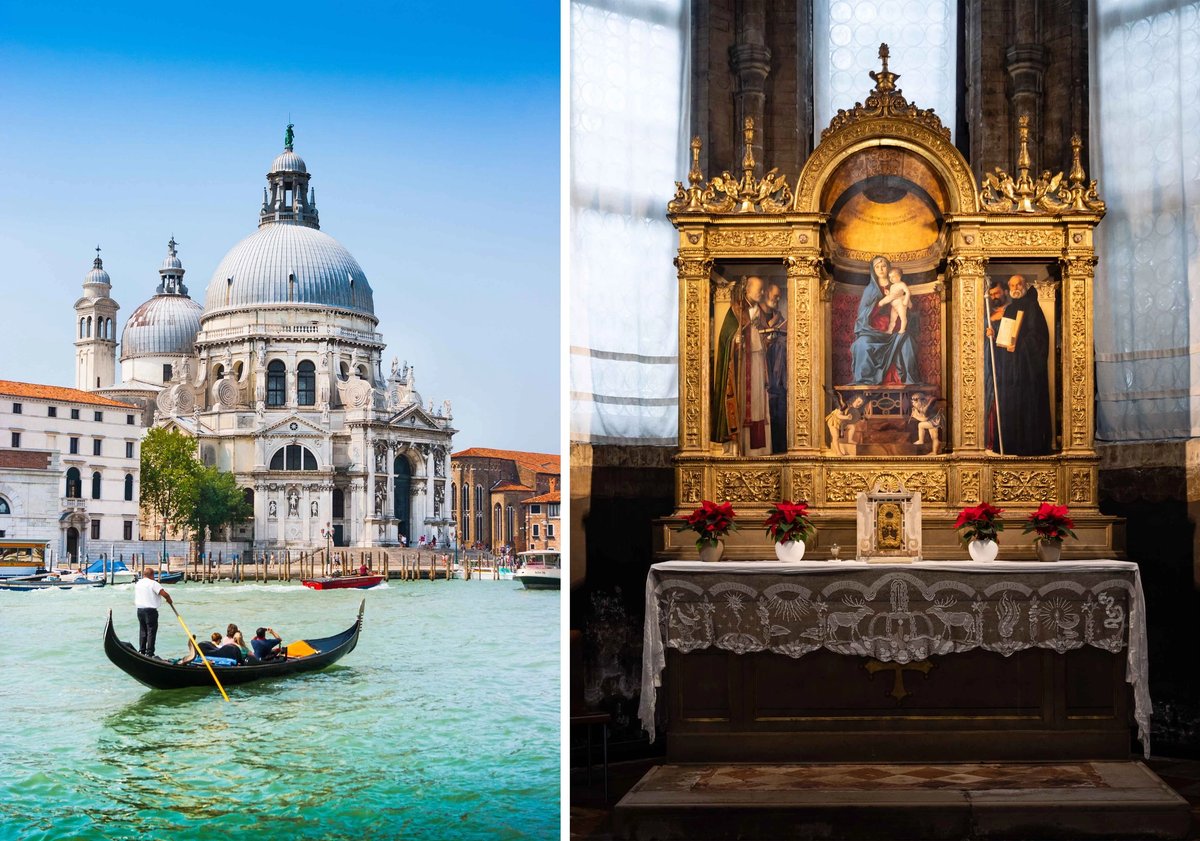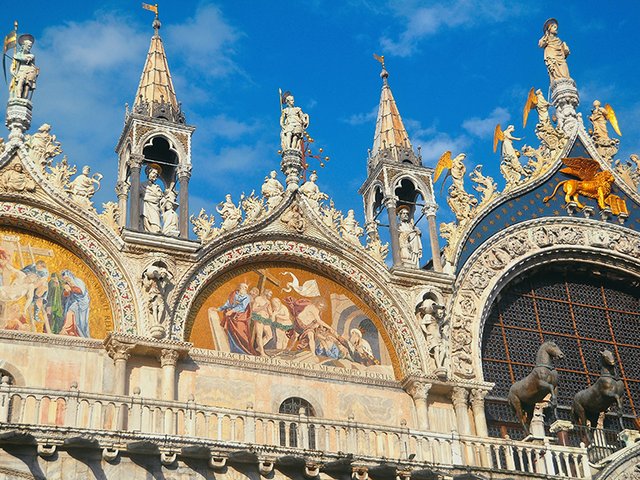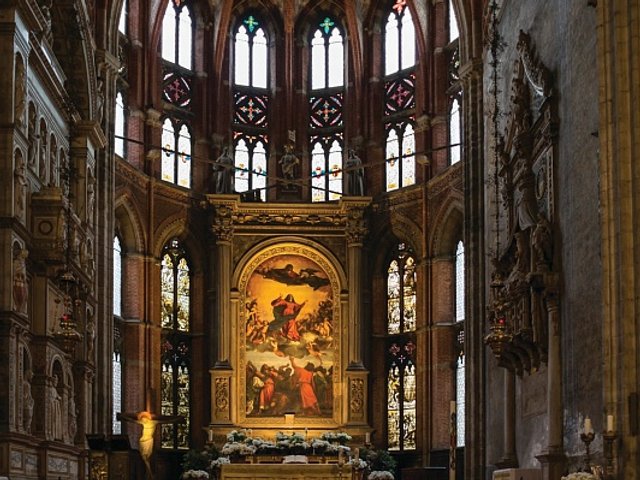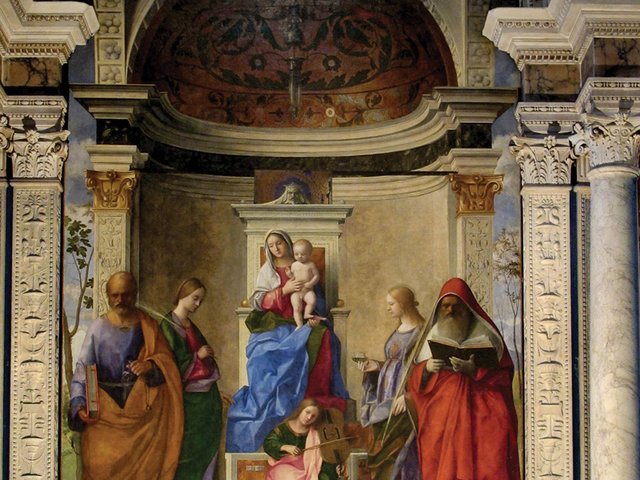The Renaissance artist Giovanni Bellini (around 1435-1516) was the dominant force in the art world of Venice for decades. His father Jacopo Bellini and brother Gentile were both master painters, while his brother-in-law was the virtuoso artist Andrea Mantegna. Giovanni taught both Giorgione and Titian, and even in old age (he died in his early 80s) Albrecht Dürer considered him “still the best in painting”. Bellini's subjects ranged from altarpieces and society portraits to the epic history paintings commissioned by the Doge’s Palace when he was the official painter of the Republic of Venice.
But Bellini’s supreme gift was his ability to create moments of transcendent beauty and stillness, infused with a delicious melancholy—especially in his quiet, contemplative images of the Virgin and Child. His works defined the concept of serenity in a city that labelled itself La Serenissima (the most serene). And experiencing his art in Venice today means not only exploring the great museums and palaces that house his work, but the sublime series of altarpieces which, 500 years later, are still in the churches for which he originally made them.
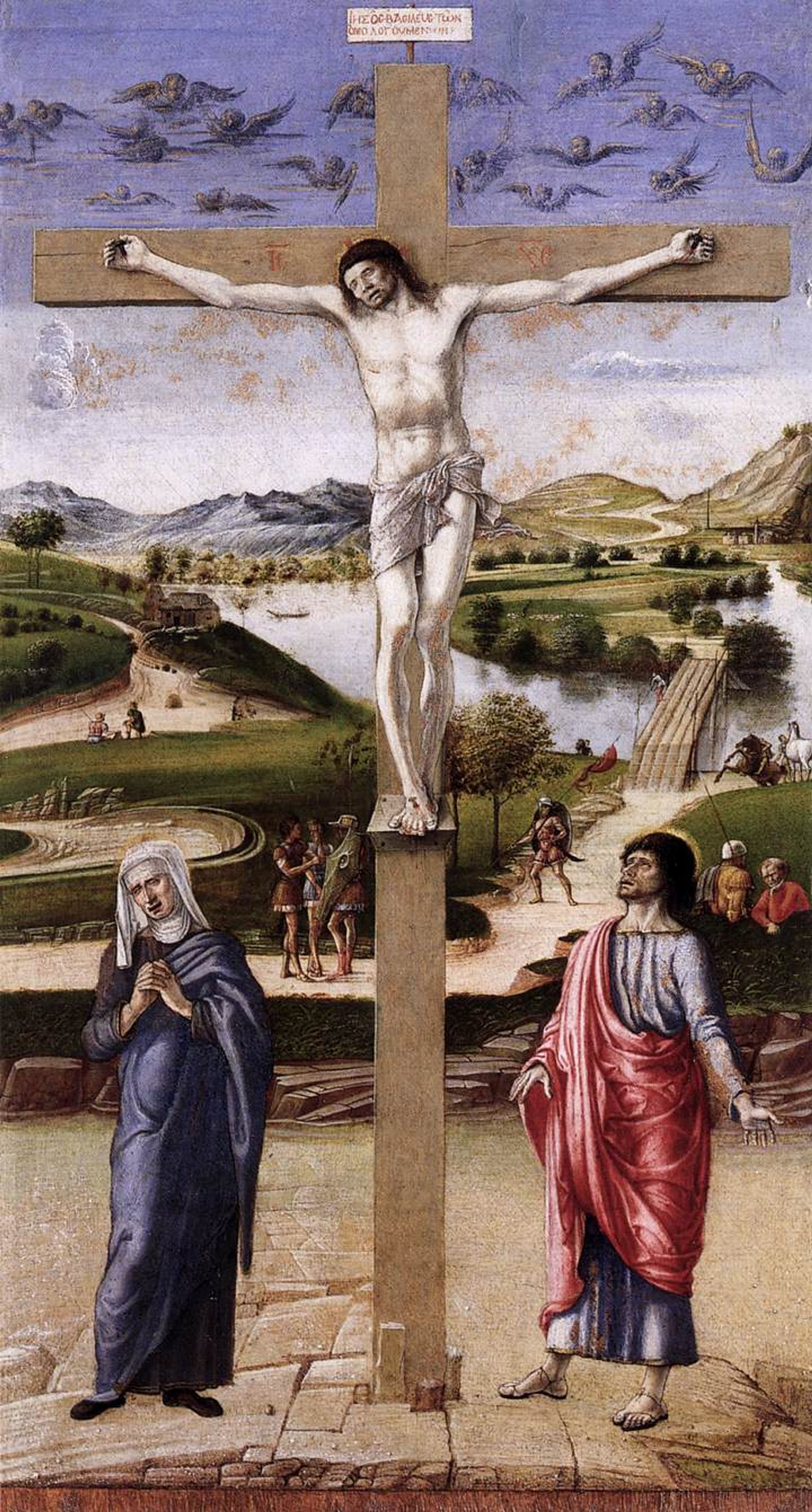
Museo Correr
1. Crucifixion (around 1455-60), Museo Correr
The Museo Correr has several paintings by Bellini and his associates including this small Crucifixion, which was probably made when he was in his early 20s and stylistically still under the influence of Jacopo and also Mantegna. A pale-skinned Christ hangs on the cross; he has died, but suffering is still etched on his face. The rather static figures of a grieving Mary and Saint John dominate the rest of the foreground. But it is the details in the background landscape—which was to become such an important characteristic of his art—that catch the eye, such as the figure leaning over the bridge or two men casually chatting.
Admission €25. Directions here
2. Presentation at the Temple (1460s), Fondazione Querini Stampalia
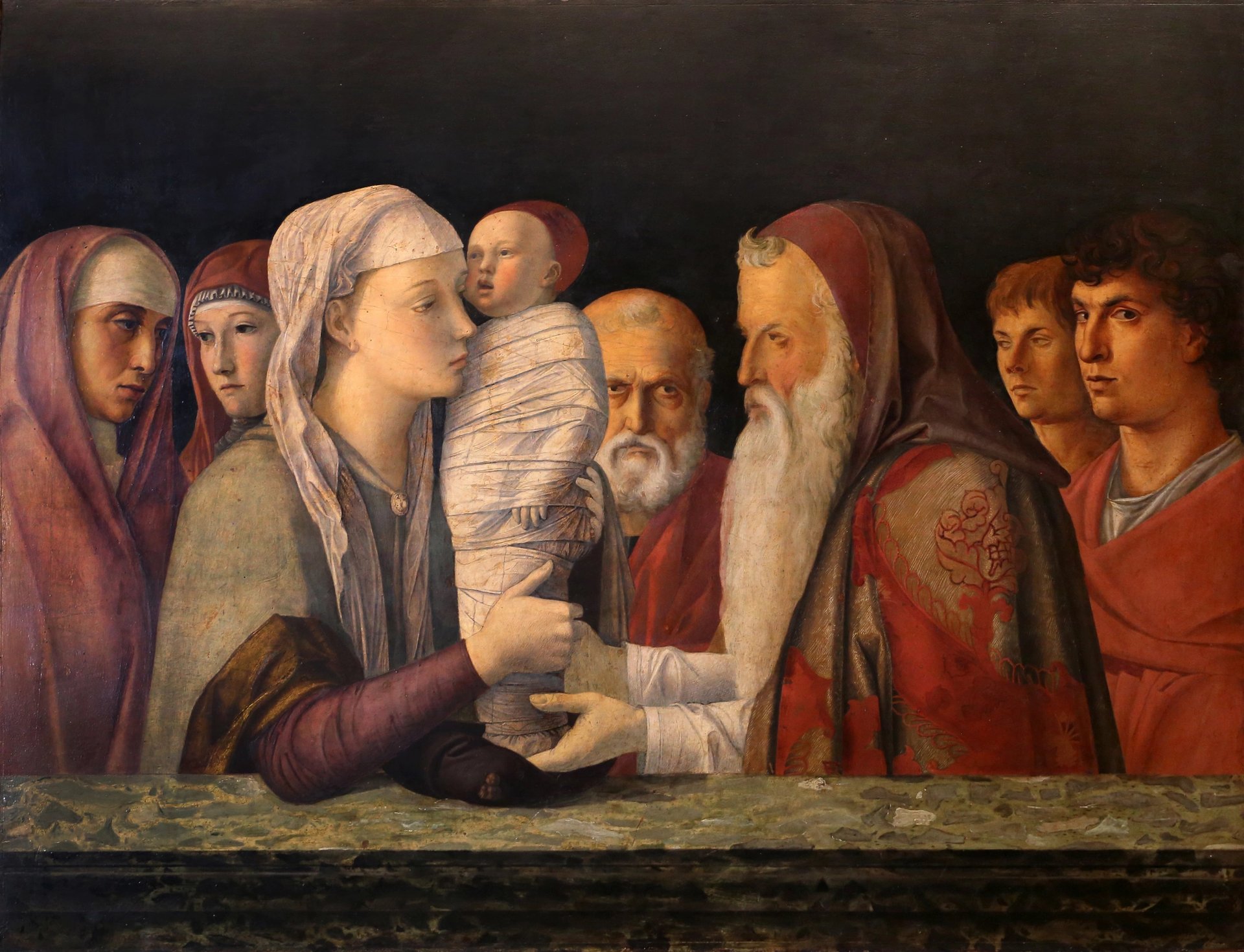
Fondazione Querini Stampalia
This luminous and charismatic painting—displayed on an easel in a room of its own—is one of the highlights of the Fondazione Querini Stampalia’s collection. The composition is a direct response to Mantegna’s version of the same subject made in the 1450s. In fact, Bellini appears to have traced the central part of Mantegna’s painting, which may have been a celebration of the birth of his own son. It has traditionally been said that some of the figures are portraits of family members: Saint Joseph may have the features of Bellini's father, Jacopo, while in the background on the left are perhaps the artist’s mother Anna and his sister Nicolosia (although the evidence for these identifications is slim).
Admission €15. Directions here
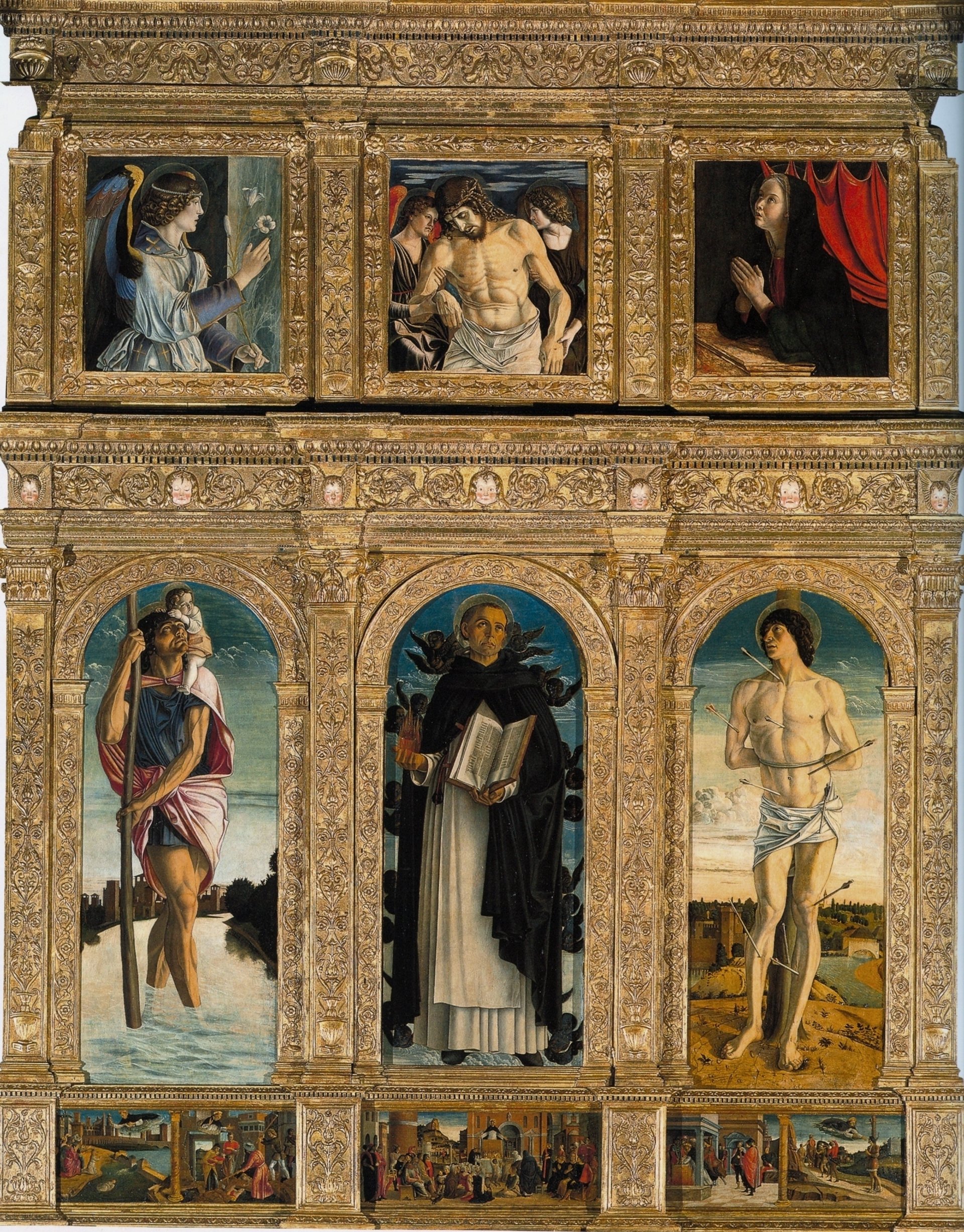
Basilica dei Santi Giovanni e Paolo
3. Polyptych of Saint Vincent Ferrer (around 1464), Basilica dei Santi Giovanni e Paolo
Known locally as Zanipolo, this spectacular Dominican church lost a great Bellini altarpiece in a fire in the 19th century. But this early polyptych survived and is still preserved in its original frame, which is only missing a lunette from the top. The nine panels are organised around a depiction of Vincent Ferrer, a Dominican saint from Valencia who had been canonised only about ten years previously. He is flanked by Saint Christopher and Saint Sebastian with an annunciation and a dead Christ above. There is a sense of monumentality to these figures, but not yet of the coherence and unity of composition that was to come. (The three-part predella is probably not by Bellini).
Admission €3.50. Directions here
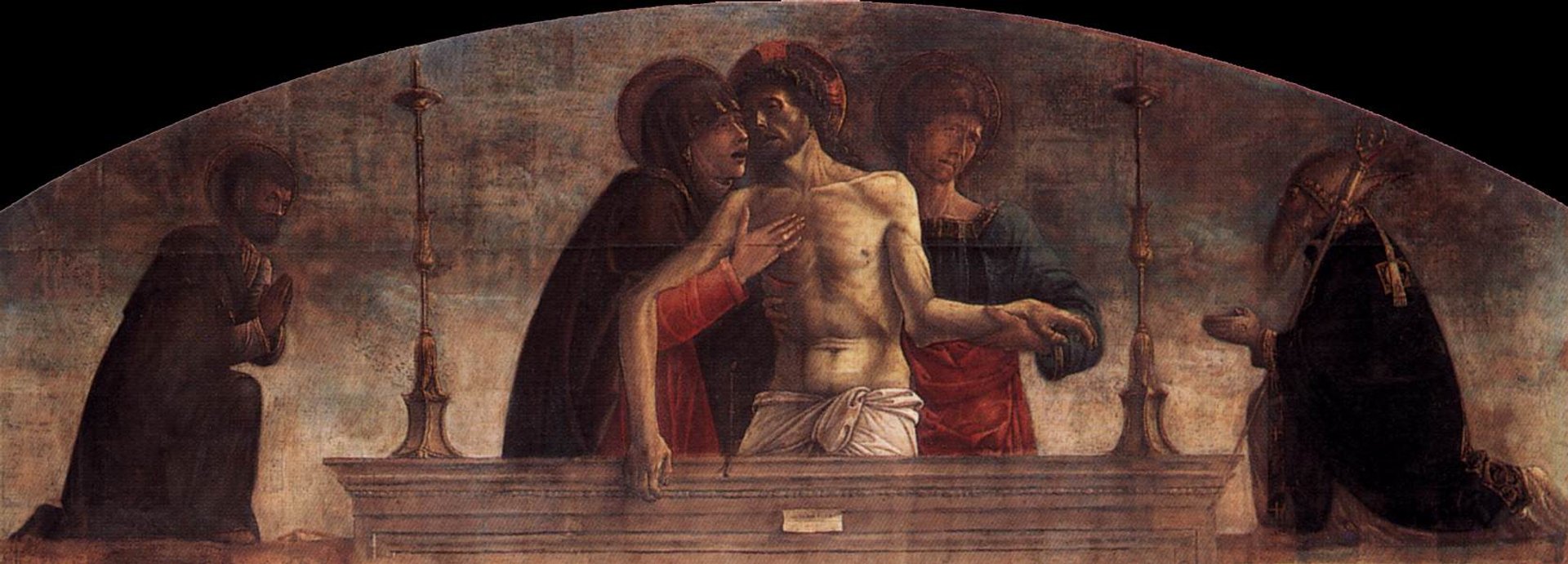
Palazzo Ducale
4. Pietà (around 1472), Palazzo Ducale
Until the great fire of 1577, the Palazzo Ducale was home to a series of epic historical paintings by Bellini, made when he was official painter to the Republic. This is one of his only works to survive the conflagration. It depicts one of Bellini’s signature themes, the dead Christ being lowered into the tomb. In this case Christ is supported by Mary and John. Saints Nicholas and Mark are shown in prayer on either side. The work was probably commissioned for the palace’s former chapel of San Nicolò and now hangs in the picture gallery in the Chamber of the Quarantia Criminale, which originally housed the highest court of appeal in the Republic.
Admission €25. Directions here

Gallerie dell'Accademia
5. San Giobbe Altarpiece (around 1487), Gallerie dell'Accademia
This monumental painting—it is 4.7m tall—is Bellini’s first-known sacra conversazione (sacred conversation) in which an enthroned Madonna and Child commune silently with a company of saints in the same pictorial space. In this case they are Saints Francis, John the Baptist and Job (the titular Giobbe, in Italian) to the left of the Madonna, and Dominic, Sebastian and Louis of Toulouse to her right. Bellini sets the figures not against a traditional landscape but within a fictive architectural setting—including a canopy suspended in the space between the Virgin and viewer—designed to reflect its location in the church for which it was commissioned (the Chiesa di San Giobbe). He also suggested a celestial soundtrack provided by three musician angels.
Admission €20. Directions here
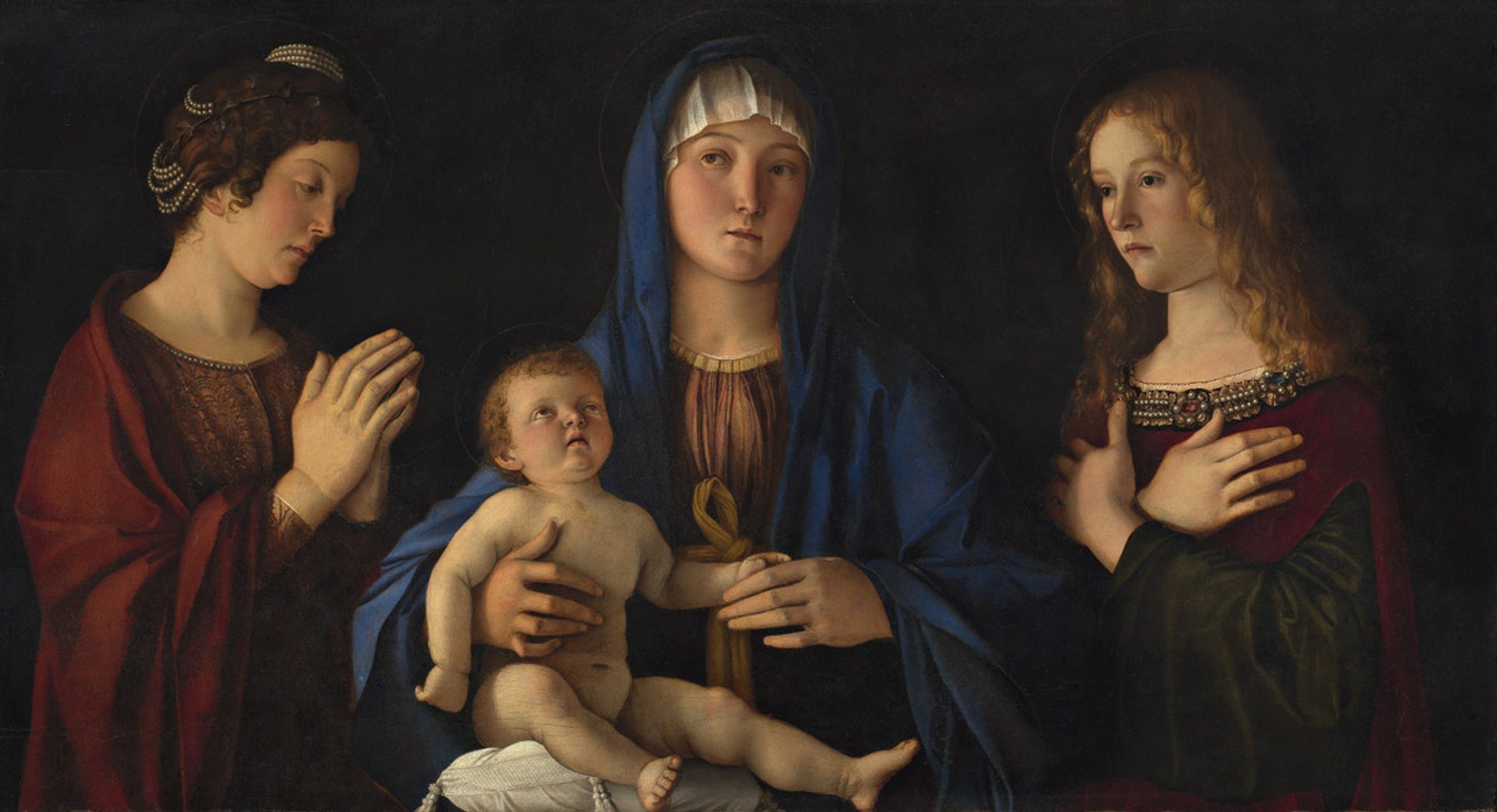
Gallerie dell'Accademia
6. Madonna and Child and Saints Catherine and Mary Magdalene (1490s), Gallerie dell'Accademia
Another sacred conversation, this time between the Virgin and Child and two saints: Catherine of Alexandria (left) and a young Mary Magdalene. There is no architectural or landscape setting here, simply a darkened background like that in the Presentation at the Temple. The faces of the three young women seem to shine in candlelight, or perhaps it is a celestial glow, which predates Caravaggio’s chiaroscuro by a century. Made for private devotion, the saints may be portraits of the patrons; given Bellini’s status they would have been from a leading patrician family.
Admission €20. Directions here
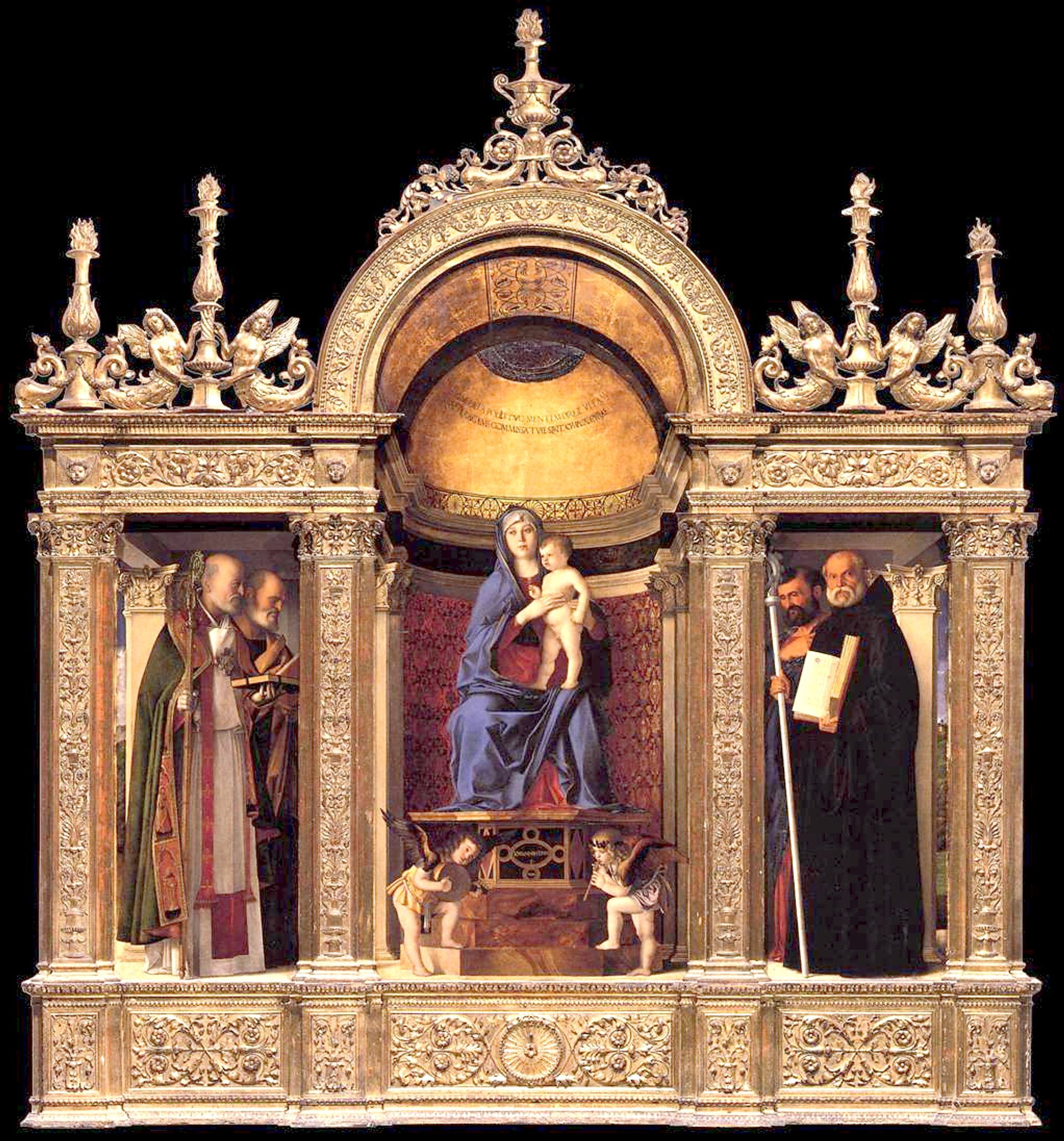
Basilica di Santa Maria Gloriosa dei Frari
7. Madonna and Child Enthroned with Saints (1488), Basilica di Santa Maria Gloriosa dei Frari
Generally known as the Frari Triptych or Pesaro Triptych, this ethereal altarpiece is a brilliant exploration of light, perspective, symmetry and human expression. It is, without question, one of Bellini’s greatest works. Still in its original frame and location, it was commissioned by the Pesaro family as the central focus of a new funerary chapel for the sacristy of this great Franciscan church. The chapel memorialised Franceschina Tron—the wife of Pietro Pesaro—who died in 1478. The four saints are the namesakes of Pietro and the couples’ three sons, Niccolo, Marco and Benedetto. The 19th-century writer John Ruskin thought it was one of “the best pictures in the world”.
Admission €5 (pay on the door). Directions here
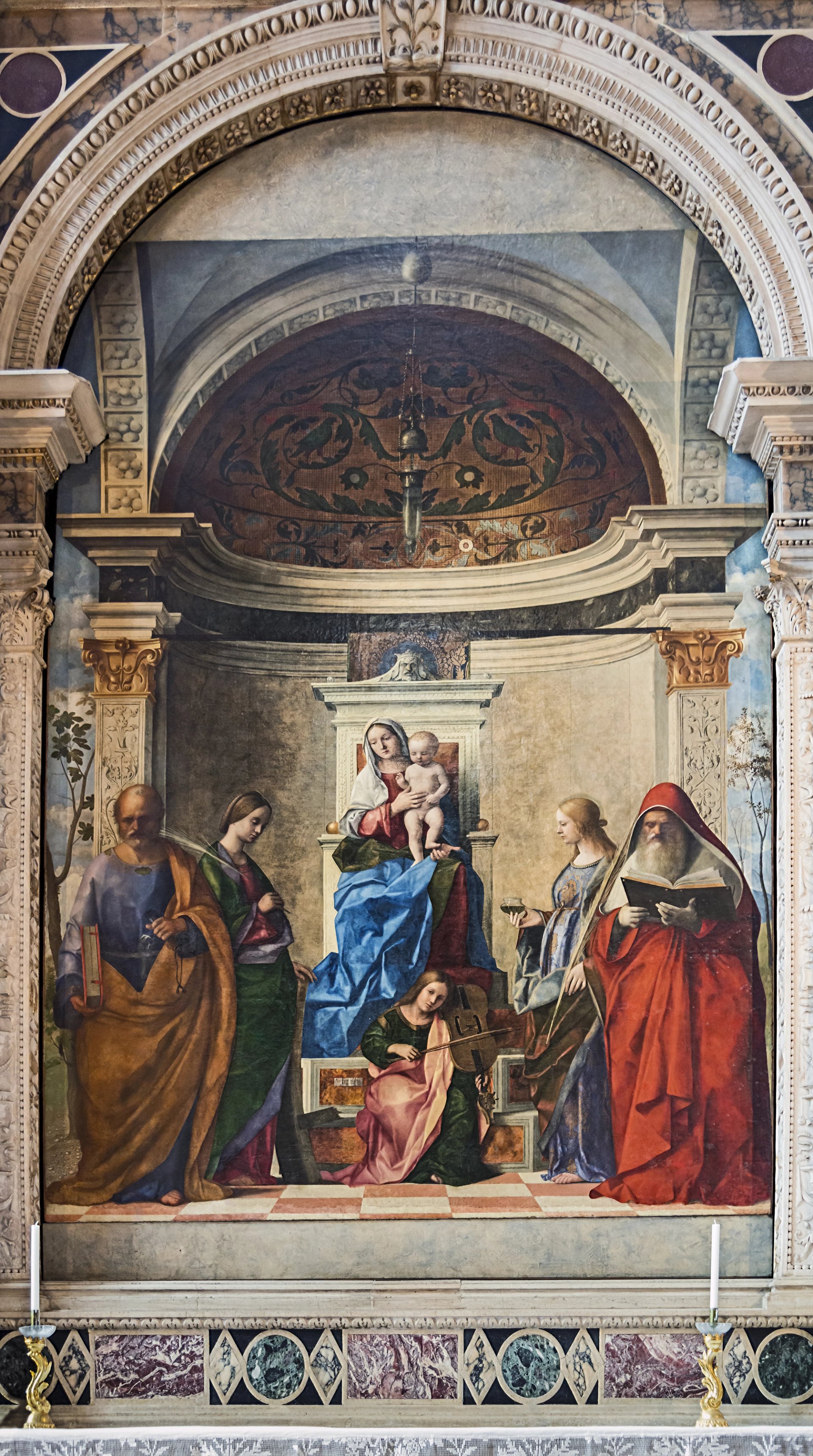
Photo: Didier Descouens. Public domain
8. Madonna Enthroned with Child and Saints (1505), San Zaccaria
This painting was commissioned for an altar in San Zaccaria by an unknown patron and it has been in the church ever since—apart from a few years in the early 19th century when it was looted by Napoleon’s troops and taken to Paris. It is not clear whether it has been returned to the original altar as it does not quite fit the marble frame, although it might have been trimmed while it was in the French capital. Another sacred conversation, this time the cast includes Saints Peter, Catherine of Alexandria, Lucy and Jerome, accompanied by a musician angel; Bellini has opened a view into a distant landscape on either side of the Virgin’s throne.
Admission free. Directions here
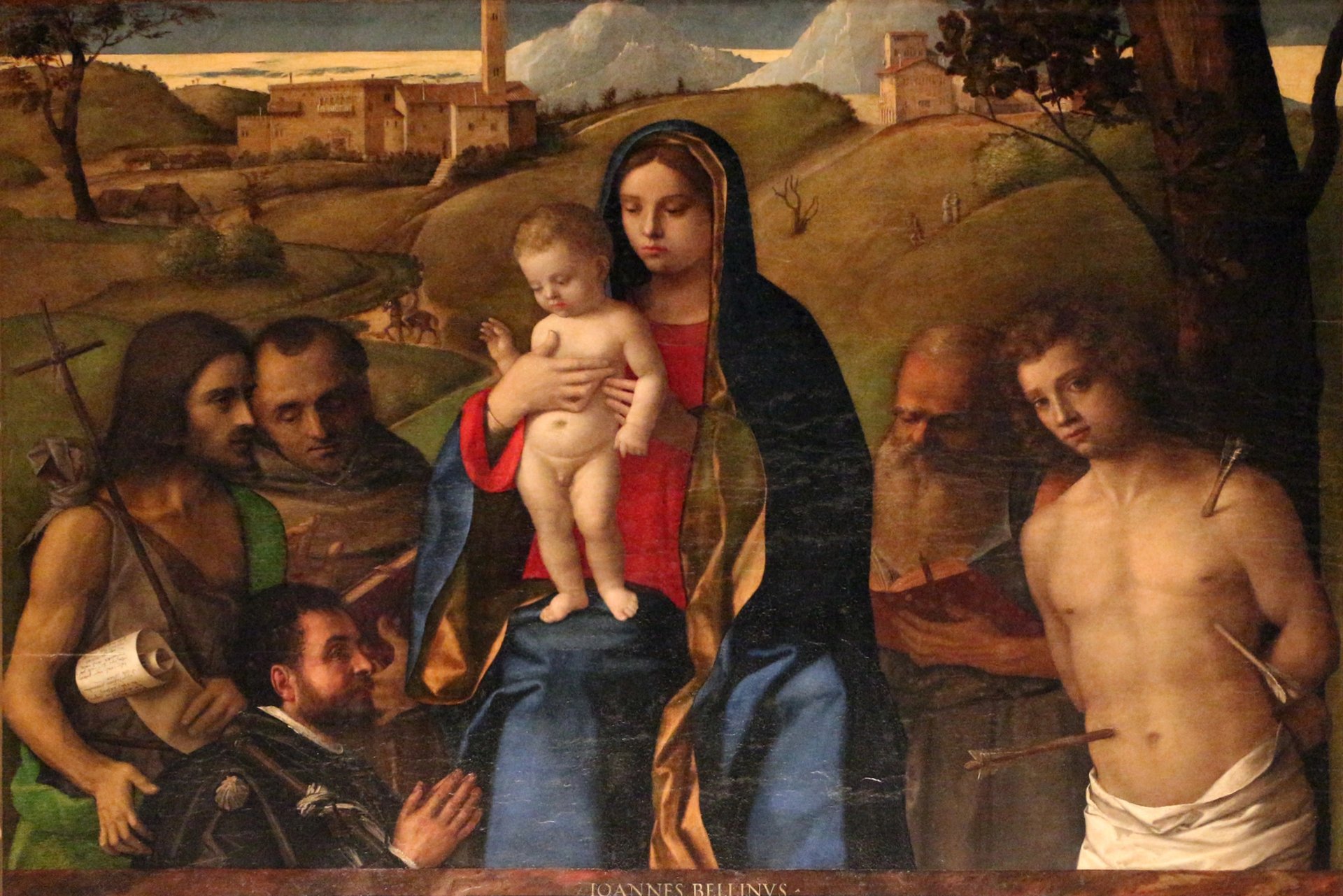
San Francesco della Vigna
9. Madonna and Child with Four Saints and Donor (1507), San Francesco della Vigna
Hidden away in a chapel next to a stunning garden cloister, this is one of Bellini’s later altarpieces. It may have been completed with the help of assistants but nevertheless evokes that sense of transcendent calm inherent in Bellini’s best work. It is also the first to place the Madonna, together with four saints, in a landscape without an architectural frame. The altarpiece was commissioned by the patrician Giacomo Dolfin for his family chapel in this Franciscan church on the northern edge of the Castello neighbourhood. Neither donor nor artist would recognise the church now—it was rebuilt in the mid-1500s with the addition of a façade designed by Andrea Palladio.
Admission free. Directions here
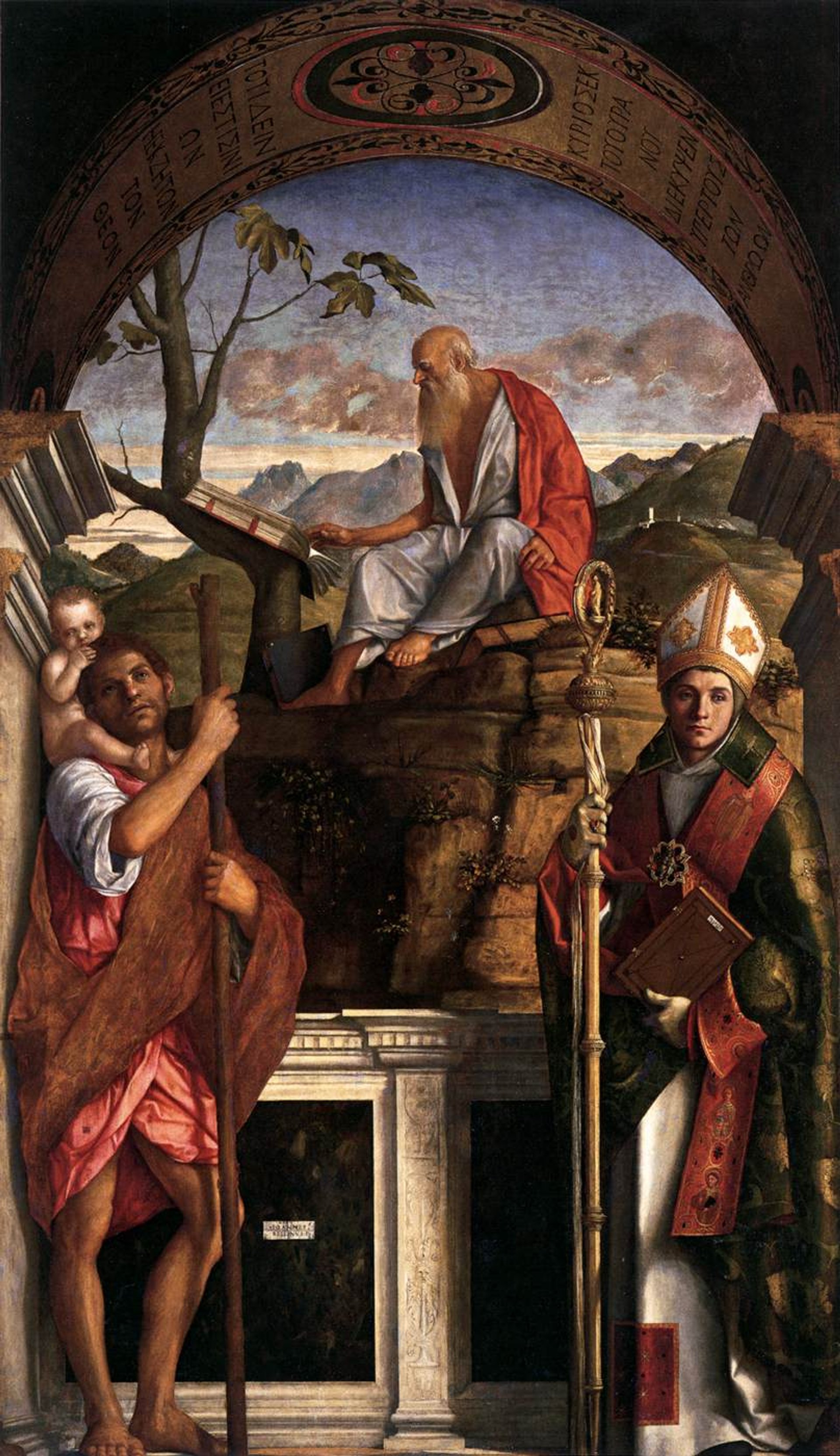
San Giovanni Crisostomo
10. Saints Christopher, Jerome and Louis of Toulouse (1513), San Giovanni Crisostomo
This is one of Bellini’s last paintings and it too is still in its original location, above an altar in a funerary chapel in the church of San Giovanni Crisostomo, a couple of minutes from the Rialto Bridge. Commissioned by the merchant Giorgio Diletti, the work is highly original both in terms of the combination of saints and the way that Bellini has incorporated them into the pyramidal composition. Saints Christopher and Louis of Toulouse stand tall on either side of the picture, while Saint Jerome sits on a rocky crag above them contemplating the Bible. Jerome’s head is silhouetted against a crepuscular sky that seems to have been influenced by one of Bellini’s star pupils, Giorgione.
Admission free. Directions here
• Nick Trend, In the Footsteps of the Great Artists, Thames & Hudson, 352pp, £50 (hb), published 25 September


